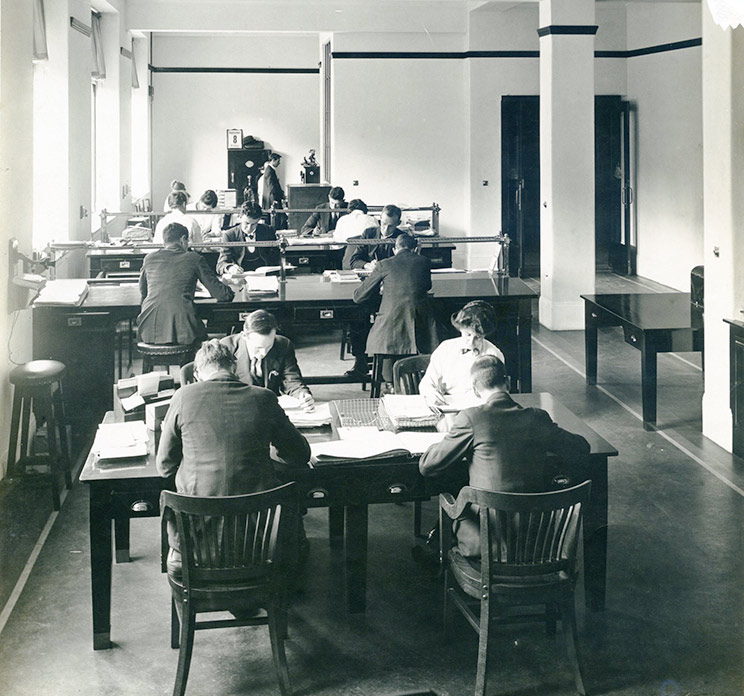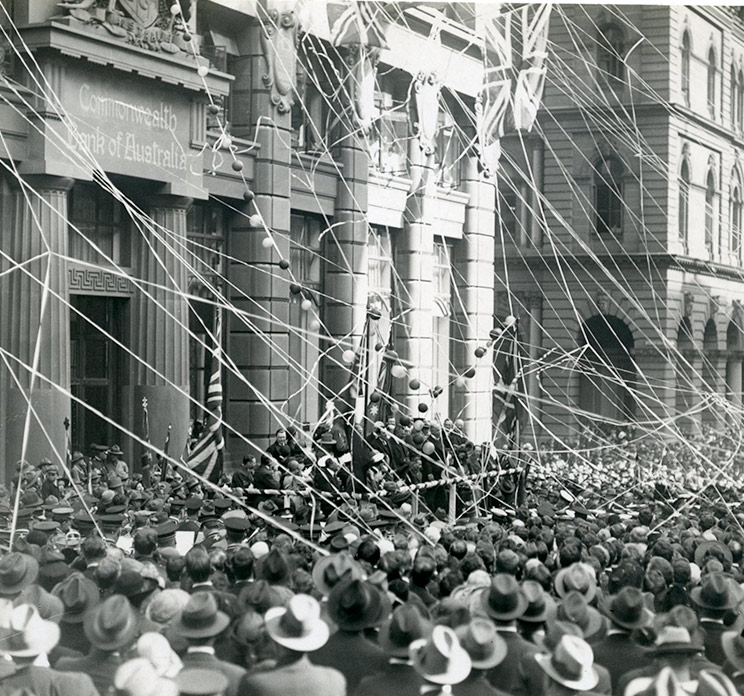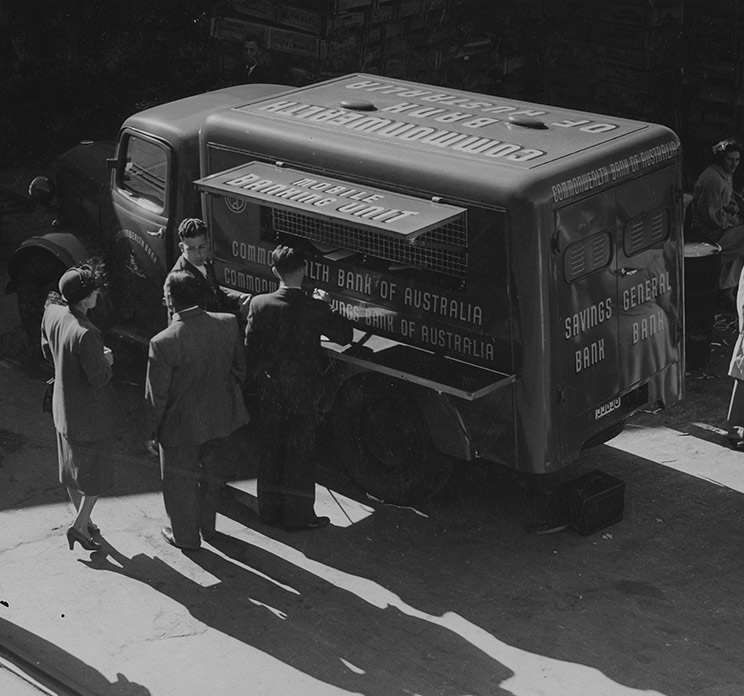Help & support
Andrew Fisher’s Labor government passes legislation on 22 December to establish the Commonwealth Bank of Australia.
First branch opens in Melbourne at 317 Collins Street on 15 July, with 12 staff and Mr (later Sir) Denison Miller as Governor.
Merger with the State Bank of Tasmania.
The first Sydney branch is opened on 13 January in Moore Steet (now Martin Place).
The Commonwealth Bank plays a key role in assisting the government during World War I, including providing regular banking services to thousands of servicemen both home and abroad.
The Commonwealth Bank opens its new head office at 120 Pitt Street, Sydney. It would later become known as the ‘money box’ building because the Bank’s widely recognised money box was modelled on this building.
The staff Community Fund is established to provide cots for infants. The Fund, which now focuses on the health and wellbeing of children, is Australia’s oldest workplace giving program.

Merger with the Queensland Government Savings Bank.
The responsibility for note issue is transferred to the Commonwealth Bank from the Commonwealth Treasury.
Merger with the government-owned Savings Bank of New South Wales. The head office at 48 Martin Place becomes the Commonwealth Savings Bank’s main Sydney CBD branch.
School banking program launches.
State Savings Bank of Western Australia acquired.
Outbreak of World War II and powers are confirmed on the Bank by emergency legislation to assist in the war effort. As in World War I, the Commonwealth Bank provides banking services to Australian troops serving abroad.

The establishment of the General Banking Division marks the Commonwealth Bank’s entry as a real competitor in the business market.
The establishment of the Commonwealth Trading Bank accelerates the Bank’s competitive presence. The creation of the Foreign Division commences the Bank’s international and Asian Expansion.
Controversy over the Bank’s dual role as a trading/savings bank on one hand and a central bank on the other comes to a head. The government introduces legislation to separate the central banking functions of the Commonwealth Bank from its commercial banking side.
Migrant Information Services is established.
With the creation of the Reserve Bank of Australia to take control of the nation’s central banking operations, and the Commonwealth Banking Corporation to provide trading, savings and development banking, the separation of the Commonwealth Bank is completed.
Commonwealth Banking Corporation was established.
Commonwealth Bank introduced Personal Loans Product.
Commonwealth Bank played an important role during the introduction of decimal currency.
Commonwealth Bank introduces Black Light Signature System in all branches.
Commonwealth Bank banking system was transformed as merchant banking, finance, travel & other services.

Commonwealth Bank introduced Bankcard Australia’s first credit card
Commonwealth Bank introduced equal pay for all female employees
Commonwealth Bank launched ATMS & associated Keycards
Commonwealth Bank became the first trading bank to become member of the Sydney futures Exchange Limited
Commonwealth Banking Corporation was renamed again as the Commonwealth Bank of Australia.
Commonwealth Bank introduced EFTPOS terminal ( Electronic Funds Transfer at Point of Sale).
Commonwealth Bank launched Which Bank advertising campaign.
Commonwealth Bank introduced Telebank service.
Commonwealth Bank introduced Phonebank facility